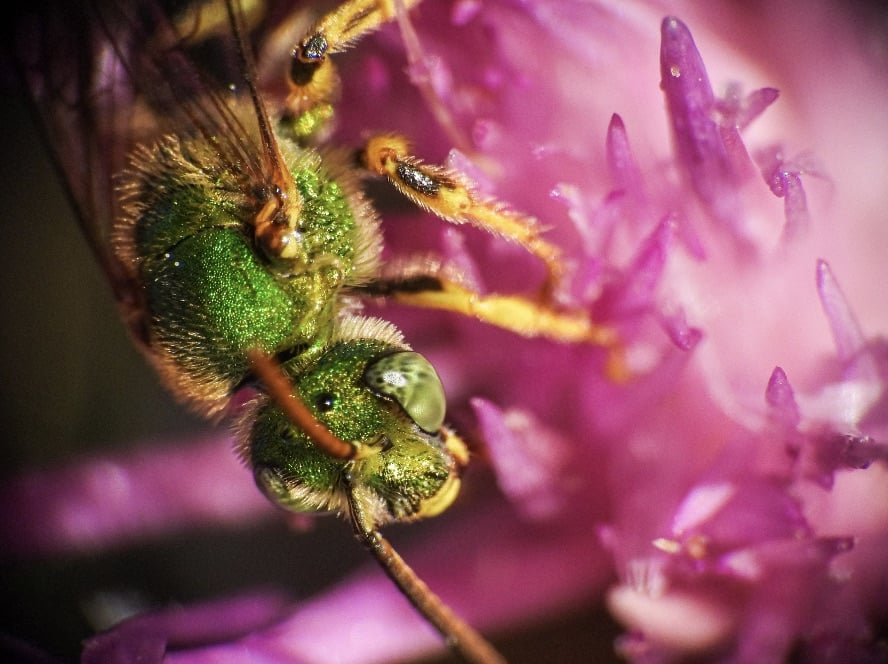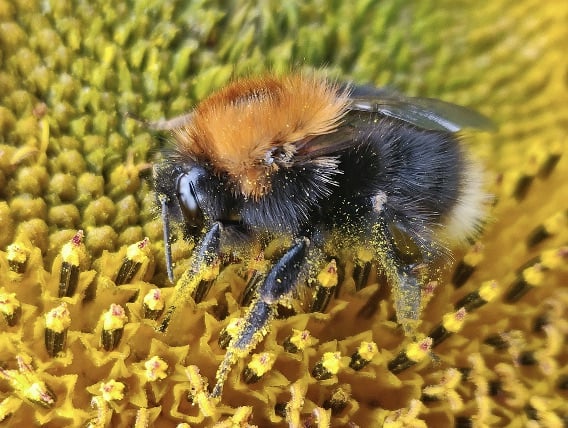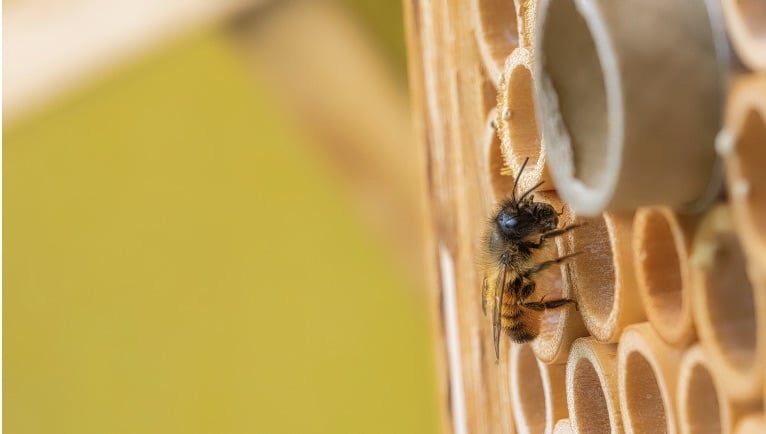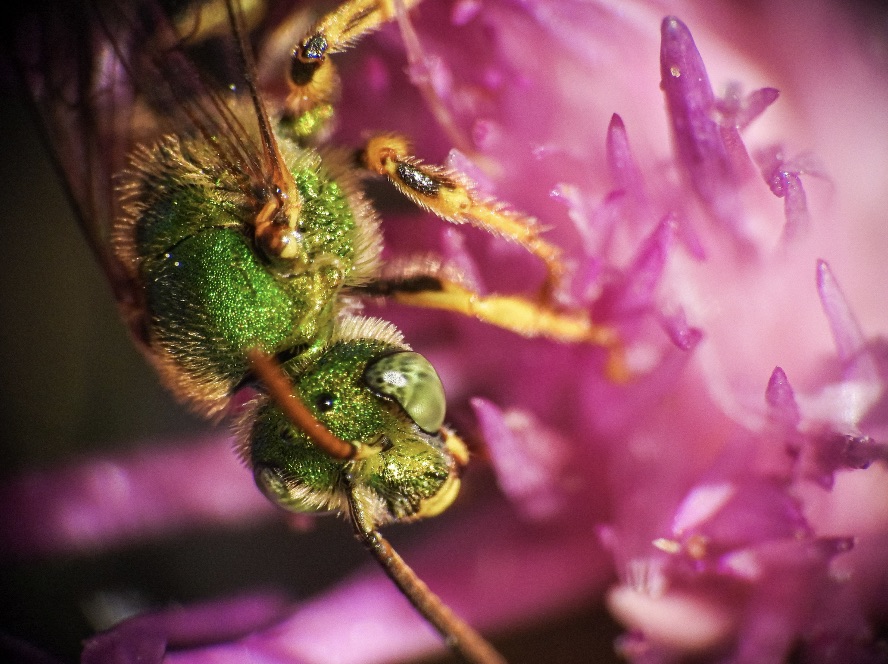“Save the bees” is a phrase that has been repeated endlessly over the last couple of decades. We know how important it is to support our pollinator population, and have learned many ways to care for bees as they do their incredibly important work.

When we talk about bees, most of us tend to think of honeybees first. Honeybees are fascinating animals that are loved globally, but they are not the only bees that need our attention.
Because we hear so much about them, many people are surprised to learn that honeybees are not native to the Americas, and often interact with them as they forage on our lawns and in our gardens. It’s good to also become acquainted with our native bees, to learn to recognize them, to find out a bit about their needs, and find out how we can help them to flourish in the ecosystem we share.
Massachusetts has a few hundred different species of bees that can be found throughout the state. Some species are social and live in colonies, some are solitary, some dig, some chew, and some are occasionally seen as pests. What they have in common is that they are amazing insects who could use a hand from humans. Below are brief introductions to some common native bees you could find in your neighborhood.
Types of Native Massachusetts Bees
Bumble Bees
There are several species of bumble bee throughout the eastern United States, and the Eastern bumble bee is one of the most common. Bumble bees are almost instantly recognizable, with their large fuzzy bodies and black and yellow patterning. They are the bees of childhood songs and front porch decorations, and are some of the least maligned bees around.

Like the non-native honeybee, the bumble bee is a social insect, and they live in colonies of several hundred bees that participate in ensuring the success of the colony by doing a specific job. Workers go out into the world to gather pollen and nectar, burying their round bodies into any bloom that will accommodate their anatomy.
Native plants, of course, are best suited for this native bee. They have evolved together, each adapting to aid in the continual success of the other. The worker bees bring their foraged goods back to their small underground colony, and the sweetness from the flowers is fed to the brood and stored for later.
It’s not typical for an entire colony to survive the winter, and often only the queen will live to see the next spring. She will insulate herself against the cold in piles of leaf litter (one great reason to refrain from raking your yard in the fall), and emerge again as the temperature warms.
Carpenter Bees
Carpenter bees are a native insect that look similar to bumble bees. They are big and rotund like their bumbling cousins, but are much less fuzzy. Unfortunately, these types of bees are often seen as pests, and are sprayed or trapped by homeowners. This is because the female carpenter bee bores shallow holes into wood in which to lay her eggs, and carpenter bees often choose to chew into wooden siding, fence posts, or decks.
Carpenter bees are solitary bees, and don’t rely on the support of a colony to rear young and gather food. These bees feed on nectar and pollen, and their large bodies are excellent tools for pollination. Like the bumble bee, carpenter bees will hibernate during the winter, in tunnels they find or make in wood.
Mason Bees
Unlike bumble bees and carpenter bees, mason bees are a little less familiar to most folks. This has a lot to do with the fact that they are simply smaller, and therefore less obvious, than their aforementioned relatives.

There are different types of mason bees, but the ones most often spotted are metallic, with a bluish tint. Others are dark or golden. These are the bees that will take up residence in the bee houses you can find at your local lawn and garden center, stuffed with bits of reed, bamboo, and sometimes small stones.
Mason bees are solitary like the carpenter bee, and females make nests in preexisting holes, nooks, and crannies. They take shelter and lay their eggs in these safe spaces, then seal them up with mud, much like masons using mortar to fill in the area around bricks. Mason bees forage for nectar and pollen, with which they sometimes cushion their homes.
Sweat Bees
There are several varieties of sweat bees, but the ones most often noticed in the Northeast are green and metallic, making them easy to spot. These bees are attracted to the water and minerals in sweat and can be pretty persistent when it comes to trying to lap up some perspiration. Though sometimes annoying, sweat bees are not aggressive.
Besides seeking the electrolytes in sweat, they also gather nectar like other bees. Some types of sweat bees live in colonies, but the green metallic sweat bee is solitary, and makes its home in holes in the ground or in wood.
These bees are all important native pollinators that can benefit from the planting of native flowers in our lawns and gardens. The pollination that they do is invaluable, and we must do what we can to help their populations thrive.
These descriptions are broad and are only a small dent in our wealth of native pollinators here in Massachusetts and throughout the United States. Once you learn to identify a few native bee species, you will start to notice others and to grow in your appreciation for the monumental task these tiny insects perform for us every day.






